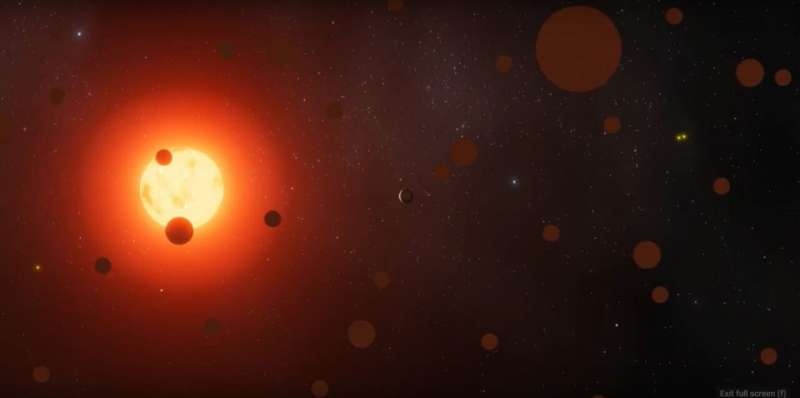NASA’s NIAC program has selected an ambitious proposal to send a swarm of tiny, high-speed spacecraft to explore the Proxima Centauri system, including the potentially habitable exoplanet Proxima b. This cutting-edge mission promises to revolutionize our understanding of our nearest celestial neighbor.

Swarming Proxima Centauri
Last week, NASA’s Innovative Advanced Concepts (NIAC) selected ‘Swarming over Proxima b’ for Phase I funding. Called Project Blue, the joint venture of Space Initiatives, Inc., and the Initiative for Interstellar Studies (i4is) would dispatch a swarm of small laser-powered nanocraft on a reconnaissance mission to travel to Proxima Centauri system.
The core element: the deployment of ‘picosatellites’, also called ‘Coracles’ — small, two-centimeter-thin, and four-meter-wide satellites that weigh only a couple of grams each. These probes will be accelerated using an array of powerful lasers, up to 20% the speed of light. A swarm of one thousand of these Coracles will be built to perform data collection and communication with Earth.
Exploring the Closest Exoplanet
The Swarming Proxima Centauri mission has as its primary target the rocky exoplanet known as (Proxima B) orbiting within the habitable zone of its parent star, Proxima Centauri. We know this is the closest exoplanet to Earth and in an ideal place to study a possibly habitable world.
A swarm of Coracles will fly past Proxima b to take spectroscopic observations of its atmosphere, surface, and signs of life. Among other things, the researchers anticipate seeing different phenomena—because we are expected to see redshifts, blueshifts, and an ‘eyeball’ —appearance of the planet in that hemispheres is probably going go be locked rotationally. This information will tell us much about the enigmatic planet and its capacity to host life as we know it.
Conclusion
The Swarming Proxima Centauri Mission is a major step towards our exploration of the nearest stars and their planetary systems. The tiny, high-speed spacecraft of this NIAC-selected proposal would swarm Proxima Centauri and its potentially habitable exoplanet, Proxima b—revolutionizing how much we could know about them as interstellar exploration becomes ever more feasible and impactful through the power of advanced technologies and worldwide vision.
